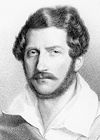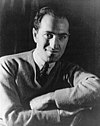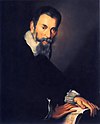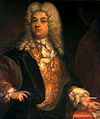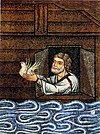Instructions
The layout design for these subpages is at Portal:Opera/Selected article/Layout.
- Add a new Selected article to the next available subpage.
- The list should only contain articles that have been given a quality rating of B-class or higher.
- The "blurb" for all selected articles should be approximately 10 lines, for appropriate formatting in the portal main page.
- Update "max=" to new total for its {{Random portal component}} on the main page.
Selected articles list
Portal:Opera/Selected article/1
Ring Cycle
.
Portal:Opera/Selected article/2
Diamante Scarabelli, whose great success at
Bologna in the 1697
pasticcio Perseo inspired the publication of a volume of eulogistic verse entitled
La miniera del Diamante, also performed. Written when Handel was just 24,
Agrippina was one of his first operas, and demonstrated his assimilation of the
Italian style of opera, after his time spent in Rome composing Italianate
cantatas and absorbing the influence of
Alessandro Scarlatti
Portal:Opera/Selected article/3
L'ange de Nisida (
The Angel of Nisida) is an
opera semiseria in four acts by Italian composer
Gaetano Donizetti, from a
libretto by Alphonse Royer and Gustave Vaëz. Parts of the libretto are considered analogous with the libretto for
Giovani Pacini's Adelaide e Comingio, and the final scene is based on the
François-Thomas-Marie de Baculard d'Arnaud play
Les Amants malheureux, ou le comte de Comminges. Donizetti worked on the opera in the autumn of 1839—its final page is dated 27 December 1839. Because the subject matter involved the mistress of a
Neapolitan king, and may thus have caused difficulties with the Italian censors, Donizetti decided that the opera should be presented in France. However, the theater company Donizetti contracted went bankrupt.
L'ange was never performed and was reworked as
La favorite
Portal:Opera/Selected article/4
Académie Royale de Musique
. This reworking was given the title Orphée et Eurydice, and several alterations were made in vocal casting and orchestration to suit French tastes. The opera is the most popular of Gluck's works.
Portal:Opera/Selected article/5
Mary
.
Portal:Opera/Selected article/6

Pelléas et Mélisande (Pelléas and Mélisande) is an opera in five acts with music by Claude Debussy. The French libretto was adapted from Maurice Maeterlinck's Symbolist play Pelléas et Mélisande. It premiered at the Opéra-Comique in Paris on 30 April 1902 with Jean Périer as Pelléas and Mary Garden as Mélisande in a performance conducted by André Messager, who was instrumental in getting the Opéra-Comique to stage the work. The only opera that Debussy completed, it is considered a landmark in 20th-century music. The plot concerns a love triangle. Prince Golaud finds a mysterious young woman, Mélisande, lost in a forest. He marries her and brings her back to the castle of his grandfather, King Arkel of Allemonde. Here Mélisande becomes increasingly attached to Golaud’s younger half-brother Pelléas, arousing Golaud’s jealousy. Golaud goes to excessive lengths to find out the truth about Pelléas and Mélisande’s relationship, even forcing his own child, Yniold, to spy on the couple. Pelléas decides to leave the castle but arranges to meet Mélisande one last time and the two finally confess their love for one another. Golaud, who has been eavesdropping, rushes out and kills Pelléas. Mélisande dies shortly after, having given birth to a daughter, with Golaud still begging her to tell him "the truth".
Portal:Opera/Selected article/7

The Pirates of Penzance, or The Slave of Duty, is a comic opera in two acts, with music by Arthur Sullivan and libretto by W. S. Gilbert. It remains popular today, taking its place along with The Mikado and H.M.S. Pinafore as one of the most frequently played Gilbert and Sullivan operas. Its 1981 Broadway revival by Joseph Papp ran for 787 performances and spawned many imitations. The Pirates of Penzance was the only Gilbert and Sullivan opera to have its official premiere in New York. At the time, American law offered no copyright protection to foreigners. After their previous opera, H.M.S. Pinafore, was a hit in London, over a hundred American companies quickly mounted unauthorized "pirated" productions, often taking considerable liberties with the text and paying no royalties to the creators. By mounting their next opera in New York, Gilbert and Sullivan hoped to forestall further "piracy" by establishing the official production in America before others could copy it. This proved successful in allowing them to get some of the profits; however, it failed to ever establish any actual copyright, and future operas would return to premièring in London. The creative period for Pirates was unusual, in that Sullivan composed the acts in reverse — bringing the completed Act II with him, with Act I existing only in sketches. When he arrived in New York, he found that he had left the sketches behind, and he had to reconstruct the first act from memory.
Portal:Opera/Selected article/8
cabinet minister
in charge of Britain's Royal Navy. As with most of the Gilbert and Sullivan operas, a surprise twist changes matters dramatically near the end of the story.
Portal:Opera/Selected article/9
Savoy Operas. The opera was revived in 1884 and again in 1898. In the early years of the 20th century, however, it gradually fell out of favour. Between the mid-1930s and the early 1970s, the
D'Oyly Carte Opera Company
Portal:Opera/Selected article/10
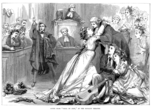
Trial by Jury is a comic opera in one act, with music by Arthur Sullivan and libretto by W. S. Gilbert. It was first produced on 25 March 1875, at London's Royalty Theatre, where it initially ran for 131 performances and was considered a hit, receiving critical praise and outrunning its popular companion piece, Jacques Offenbach's La Périchole. The story concerns a "breach of promise of marriage" lawsuit in which the judge and legal system are the objects of lighthearted satire. Gilbert based the libretto of Trial by Jury on an operetta parody that he had written in 1868. The opera premiered more than three years after Gilbert and Sullivan's only previous collaboration, Thespis, an 1871–72 Christmas season entertainment. In the intervening years, both the author and composer were busy with separate projects. Beginning in 1873, Gilbert tried several times to get the opera produced before the impresario Richard D'Oyly Carte suggested that he collaborate on it with Sullivan. Sullivan was pleased with the piece and promptly wrote the music. As with most Gilbert and Sullivan operas, the plot of Trial by Jury is ludicrous, but the characters behave as if the events were perfectly reasonable. This narrative technique blunts some of the pointed barbs aimed at hypocrisy, especially of those in authority, and the sometimes base motives of supposedly respectable people and institutions. The success of Trial by Jury launched the famous series of 13 collaborative works between Gilbert and Sullivan that came to be known as the Savoy Operas.
Portal:Opera/Selected article/11
burlesque style, considerably different from Gilbert and Sullivan's later works. It was a modest success—for a Christmas entertainment of the time—and closed on 8 March 1872, after a run of 63 performances. It was advertised as "An entirely original Grotesque Opera in Two Acts". The story follows an acting troupe headed by
Thespis, the legendary Greek father of the
drama, who temporarily trade places with the
gods on
Mount Olympus
Portal:Opera/Selected article/12
toreador's song" from Act 2 is among the best known of all operatic arias. Later commentators have asserted that
Carmen forms the bridge between the tradition of
opéra comique and the realism or
verismo
Portal:Opera/Selected article/13
The foyer and
auditorium date from 1858, but almost every other element of the present complex dates from an extensive reconstruction in the 1990s. The Royal Opera House seats 2,268 people and consists of four tiers of
boxes and
balconies and the
amphitheatre gallery. The
proscenium is 12.20 m wide and 14.80 m high. The main auditorium is a Grade 1
listed building
Portal:Opera/Selected article/14
standard operatic repertoire.
Porgy and Bess is also regularly performed internationally, and several recordings of the complete work, including Gershwin's cuts, have been made. "
Summertime" is by far the best-known piece from the work, and countless interpretations of this and other individual numbers have also been recorded and performed. The opera is admired for Gershwin's innovative synthesis of European orchestral techniques with American
jazz and
folk music
Portal:Opera/Selected article/15
The
Brünnhilde
's ashes. The various musical themes associated with the Rhinemaidens are regarded as among the most lyrical in the whole Ring cycle, bringing to it rare instances of comparative relaxation and charm. It is reported that Wagner played their famous lament at the piano on the night before he died in 1883.
Portal:Opera/Selected article/16
Between 1769 and 1773 the young
Archbishop of Salzburg's court, becoming deputy
Kapellmeister in 1763; but he had also devoted much time to Wolfgang's and sister
Nannerl's musical education. He took them on a "
grand tour" between 1764 and 1766, and spent some of 1767 and most of 1768 with them in the
imperial capital,
Vienna. The children's performances had captivated audiences, especially early in these journeys; and they made a considerable impression on European society. By 1769 Nannerl had reached adulthood, but Leopold was anxious to continue 13-year-old Wolfgang's education in Italy, a crucially important destination for any young composer of the 18th century.
Portal:Opera/Selected article/17
The
musica secreta
in the 1570s. The ensemble evolved into an all-female group of professional musicians, the concerto delle donne, who performed formal concerts for members of the inner circle of the court and important visitors. Their signature style of florid, highly ornamented singing brought prestige to Ferrara and inspired composers of the time.
Portal:Opera/Selected article/18
Arthurian knight Parzival (
Percival) and his quest for the
Holy Grail. Wagner first conceived the work in April 1857 but it was not finished until twenty-five years later. It was to be Wagner's last completed opera and in composing it he took advantage of the particular
sonority of his
Bayreuth Festspielhaus.
Parsifal was first produced at the second
Bayreuth Festival on 26 July 1882 in a performance conducted by
Hermann Levi. The Bayreuth Festival maintained an exclusive monopoly on
Parsifal productions until 1903, when the opera was performed at the
Metropolitan Opera
Portal:Opera/Selected article/19
.
Portal:Opera/Selected article/20
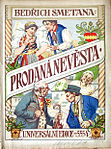
Provisional Theatre,
Prague, on 30 May 1866. Set in a country village and with realistic characters, it tells the story of how, after a late surprise revelation, true love prevails over the combined efforts of ambitious parents and a scheming marriage broker. The opera was not immediately successful, and was revised and extended in the following four years. In its final version, premiered in 1870, it gained rapid popularity and eventually became a worldwide success. Czech national opera until this time had been represented only by a number of minor, rarely performed works. This opera, Smetana's second, was part of his quest to create a truly Czech operatic genre. Smetana's musical treatment makes considerable use of traditional Bohemian dance forms such as the
polka and
furiant
Portal:Opera/Selected article/21
L'incoronazione di Poppea (
Poppea, mistress of the
Roman emperor Nerone (
Nero), is able to achieve her ambition and be crowned empress. The opera was revived in
Naples in 1651, but was then neglected until the rediscovery of the score in 1888, after which it became the subject of scholarly attention in the late 19th and early 20th centuries. Since the 1960s the opera has been performed and recorded many times. In a departure from traditional literary morality it is the adulterous liaison of Poppea and Nerone which triumphs, although this victory is demonstrated by history to have been transitory and hollow. Moreover, in Busenello's version of the story all the major characters are morally compromised. Written when the genre of opera was only a few decades old, the music for
L'incoronazione di Poppea has been praised for its originality, its melody, and for its reflection of the human attributes of its characters. The work helped to redefine the boundaries of theatrical music, and established Monteverdi as the leading musical dramatist of his time.
Portal:Opera/Selected article/22
Twice Through the Heart is a musical work by the English composer Mark-Anthony Turnage, variously described as a dramatic scena, as a monodrama, as a song cycle It is scored for mezzo-soprano and 16 instrumentalists and sets an English-language libretto by the Scottish poet Jackie Kay based on her script for a television programme. Originally intended to be a full-length opera, Twice was composed between 1994 and 1996, undergoing substantial reworking before Turnage found a form with which he was satisfied. It was first performed in 1997 when it was put on both in the concert hall and in the opera house. The critical reception has been generally favourable, with several authors commenting positively about the instrumental writing and emotional impact of the work, though some critics see limitations in the libretto or note the great demands that the vocal writing provides for the soloist.
Portal:Opera/Selected article/23

Trojan Wars Ulisse, king of
Ithaca, finally returns to his kingdom where he finds that a trio of villainous suitors have seized the realm and are importuning his faithful queen,
Penelope. With the assistance of the gods, his son
Telemaco and a staunch friend Eumete,
Ulisse vanquishes the suitors and recovers his kingdom.
Il ritorno is the first of three full-length works which Monteverdi wrote for the burgeoning Venetian opera industry during the last five years of his life. Together with Monteverdi's other Venetian stage works, it is considered one of the first modern operas. Its music, while showing the influence of earlier works, also demonstrates Monteverdi's development as a composer of opera, through his use of fashionable forms such as
arioso, duet and
ensemble alongside the older-style
recitative
Portal:Opera/Selected article/24
Tosca is an
invasion of Italy. It depicts graphic scenes of torture, murder and suicide, yet it contains some of Puccini's best-known lyrical arias, and has inspired memorable performances from many of opera's leading singers. Puccini saw Sardou's play when it was touring Italy in 1889 and, after some vacillation, obtained the rights to turn the work into an opera in 1895. Turning the wordy French play into a succinct Italian opera took four years, during which the composer repeatedly argued with his librettists and publisher. While critics have frequently dismissed the opera as a facile melodrama with confusions of plot—musicologist
Joseph Kerman famously called it a "shabby little shocker"—the power of its score and the inventiveness of its orchestration have been widely acknowledged. The dramatic force of
Tosca and its characters continues to fascinate both performers and audiences, and the work remains one of the most frequently performed operas.
Portal:Opera/Selected article/25

Alessandro Striggio. It is based on the
Greek legend of
Orpheus, and tells the story of his descent to
Hades and his fruitless attempt to bring his dead bride
Eurydice back to the living world. Written in 1607 for a court performance during the annual
Carnival at
Mantua,
L'Orfeo is one of the earliest music dramas still regularly performed. Within the musical theatre at the beginning of the 17th century the traditional
intermedio
Portal:Opera/Selected article/26

Gianni Schicchi is a comic opera in one act by Giacomo Puccini to an Italian libretto by Giovacchino Forzano, composed in 1917–18. The libretto is based on an incident mentioned in Dante's Divine Comedy. The work is the third and final part of Puccini's Il trittico—three one-act operas with contrasting themes, written to be presented together. Although it continues to be performed with one or both of the other trittico operas, Gianni Schicchi is now more frequently staged either alone or with short operas by other composers. When Il trittico premiered at New York's Metropolitan Opera in December 1918, Gianni Schicchi became an immediate hit, whereas the other two operas, Suor Angelica and Il tabarro were received with less enthusiasm. This pattern was broadly repeated at the Rome and London premieres and led to commercial pressures to abandon the less successful elements. Although on artistic grounds Puccini opposed performing the three operas except as the original triptych, by 1920 he had given his reluctant consent to separate performances. Gianni Schicchi has subsequently become the most-performed part of Il trittico, and has been widely recorded.
Portal:Opera/Selected article/27
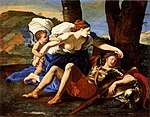
Haymarket on 24 February 1711. The story of love, battle and redemption set at the time of the
First Crusade is loosely based on
Torquato Tasso's epic poem
Gerusalemme liberata ("Jerusalem Delivered"), and its staging involved many original and vivid effects. It was a great success with the public, despite negative reactions from literary critics hostile to the contemporary trend towards Italian entertainment in English theatres. The music for
Rinaldo was composed very quickly. Much of it is made up of borrowings and adaptations from the operas and other works that Handel had composed during his long stay in Italy in 1706–10. In the years following the premiere, Handel frequently introduced new numbers, discarded others, and transposed parts to different voice ranges. Despite the lack of a standard edition, with its spectacular vocal and orchestral passages
Rinaldo has been cited as one of Handel's greatest operas. Of its individual numbers the soprano aria "
Lascia ch'io pianga
Portal:Opera/Selected article/28
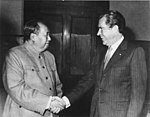
Nixon in China is an opera in three acts by John Adams, with a libretto by Alice Goodman. Adams' first opera, it was inspired by the 1972 visit to China by US President Richard Nixon. The work premiered at the Houston Grand Opera on October 22, 1987, in a production by Peter Sellars with choreography by Mark Morris. When Sellars approached Adams with the idea for the opera in 1985, Adams was initially reluctant, but eventually decided that the work could be a study in how myths come to be, and accepted the project. To create the sounds he sought, Adams augmented the orchestra with a large saxophone section, additional percussion, and electronic synthesizers. Although sometimes described as "minimalist", the score displays a variety of musical styles, embracing minimalism after the manner of Philip Glass alongside passages echoing 19th century composers such as Wagner and Johann Strauss. Following the 1987 premiere, the opera received mixed reviews; some critics dismissed the work, predicting it would soon vanish. However, it has been presented on many occasions since, in Europe as well as in North America, and has been recorded twice. In 2011, Nixon in China received its Metropolitan Opera debut, a production based on the original sets, and in the same year was given an abstract production in Toronto by the Canadian Opera Company. Recent critical opinion has tended to recognize the work as a significant and lasting contribution to American opera.
Portal:Opera/Selected article/29
Sadler's Wells
theatre in north London, a larger house, better suited to opera than the Old Vic. The opera company grew there into a permanent ensemble in the 1930s. During the Second World War, the theatre was closed and the company toured British towns and cities. After the war, the company returned to its home, but it continued to expand and improve, and by the 1960s a larger theatre was needed. In 1968, the company moved to the London Coliseum in the heart of London; in 1974 it adopted the name English National Opera (ENO). The company has survived several proposals to merge it with the Royal Opera.
Portal:Opera/Selected article/30
"Au fond du temple saint", generally known as "The Pearl Fishers Duet", is one of the best-known numbers in Western opera. Despite a good reception by the public, press reactions to the work were generally hostile and dismissive, although other composers, notably
Hector Berlioz, found considerable merit in the music. Modern critical opinion has been kinder than that of Bizet's day. Commentators describe the quality of the music as uneven and at times unoriginal, but acknowledge the opera as a work of promise in which Bizet's gifts for melody and evocative instrumentation are clearly evident. They have identified clear premonitions of the composer's genius which would culminate, 10 years later, in
Carmen
Portal:Opera/Selected article/31
The Italian composer
Monteverdi's lost operas has been deduced from contemporary documents, including the many letters that he wrote. These papers provide irrefutable evidence that four of these works—
L'Arianna,
Andromeda,
Proserpina rapita and
Le nozze d'Enea in Lavinia—were completed and performed in Monteverdi's lifetime, but of their music, only the famous lament from
L'Arianna, and a trio from
Proserpina, are known to have survived. The other three lost operas—
Le nozze di Tetide,
La finta pazza Licori and
Armida abbandonata—were abandoned by Monteverdi before completion. How much of their music was actually written is unknown.
Portal:Opera/Selected article/32
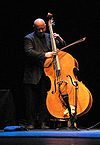
Doctor Ox's Experiment is an opera in two acts by Gavin Bryars (pictured). It has an English-language libretto by Blake Morrison after the novella of the same name by Jules Verne. It was first performed on 15 June 1998 at the London Coliseum by English National Opera (ENO) who co-commissioned the opera with BBC Television. In the experiment of the title, Doctor Ox introduces a gas into a sedate and conservative Flemish village with the result that everyone and everything becomes speeded up and chaotic. (Ox's and his assistant's names combine to make Oxygėne, the French name for Oxygen.) The opera explores the conflict between Ox's advocacy of modernity and scientific and political change and Ygène's belief that liberation and the accompanying loss of the traditional rhythms of life might bring unhappiness. The music is predominantly slow-moving and quiet. Bryars allocated distinct voice types to the different types of roles: town elders, young lovers and scientists. He also included some unusual instruments in his orchestra: an oboe d'amore and an amplified jazz bass in the love scene, an electronic keyboard and a flugelhorn instead of trumpets in the brass section. The reception was mixed with several critics complaining of boredom while others wrote of members of the audience being entranced by the music.
Portal:Opera/Selected article/33
Royal Ballet. When the company was formed, its policy was to perform all works in English, but since the late 1950s most operas have been given in the original language. From the outset, performers have comprised a mixture of British and
Commonwealth singers and international guest stars, but fostering the careers of singers from within the company was a consistent policy of the early years. Among the many guest performers have been
Maria Callas,
Plácido Domingo,
Kirsten Flagstad,
Hans Hotter,
Birgit Nilsson,
Luciano Pavarotti and
Elisabeth Schwarzkopf. Among those who have risen to international prominence from the ranks of the company are
Geraint Evans,
Joan Sutherland,
Kiri Te Kanawa and
Jon Vickers. The company's growth under the management of
David Webster
Portal:Opera/Selected article/34
Paris Opéra; the dramatic music, harmony and orchestration of
Robert, its melodramatic plot, its star singers and its sensational stage effects compelled
Frédéric Chopin, who was in the audience, to say "If ever magnificence was seen in the theatre, I doubt that it reached the level of splendour shown in
Robert...It is a masterpiece...Meyerbeer has made himself immortal".
Robert initiated the European fame of its composer, consolidated the fame of its librettist Scribe and launched the reputation of the new director of the Opéra,
Louis-Désiré Véron, as a purveyor of a new genre of opera. It also had influence on development of the
ballet
Portal:Opera/Selected article/35
Fatinitza was the first full-length, three-act operetta by Franz von Suppé. The libretto by F. Zell (a pseudonym for Camillo Walzel) and Richard Genée was based on the libretto to La circassienne by Eugène Scribe (which had been set to music by Daniel Auber in 1861) but with the lead role of Wladimir, a young Russian lieutenant who has to disguise himself as a woman named Fantinitza, changed to a trousers role; in other words, a woman played the part of the man who pretended to be a woman. It premièred on 5 January 1876, at the Carltheater Vienna with Antonie Link (1853-1931) in the title role and proved a huge success, running for more than a hundred performances, with the march "Vorwärts mit frischem Muth", proving a particular hit.
Portal:Opera/Selected article/36

Duke Vincenzo Gonzaga in
Mantua. All the music is lost apart from the extended recitative known as "Lamento d'Arianna" ("Ariadne's Lament"). This fragment became a highly influential musical work and was widely imitated; the "expressive lament" became an integral feature of Italian opera for much of the 17th century. The
libretto, which survives complete, was written in eight scenes by
Ottavio Rinuccini, who used
Ovid's
Heroides and other classical sources to relate the story of
Ariadne's abandonment by Theseus on the island of
Naxos and her subsequent elevation as bride to the god
Bacchus. The opera was composed under severe pressure of time; the composer later said that the effort of creating it almost killed him. The initial performance, produced with lavish and innovative special effects, was highly praised, and the work was equally well received in Venice when it was revived under the composer's direction in 1640 as the inaugural work for the
Teatro San Moisè
Portal:Opera/Selected article/37
"bass to
soprano. Handel's original draft of the first act prepared the aria for a different character. With a slightly variant text, it was allocated to
Cleopatra
Portal:Opera/Selected article/38

Welsh National Opera (WNO) (Welsh: Opera Cenedlaethol Cymru) is an opera company based in Cardiff, Wales; it gave its first performances in 1946. The company began as a mainly amateur body and transformed into an all-professional ensemble by 1973. In its early days the company gave a single week's annual season in Cardiff, gradually extending its schedule to become an all-year-round operation, with its own salaried chorus and orchestra. It has been described by The New York Times as "one of the finest operatic ensembles in Europe". For most of its existence the company lacked a permanent base in Cardiff, but in 2004 it moved into the new Wales Millennium Centre (pictured). The company tours nationally and internationally, giving more than 120 performances annually, with a repertoire of eight operas each year, to a combined audience of more than 150,000 people. Its most frequent venues other than Cardiff are Llandudno in Wales and Bristol, Birmingham, Liverpool, Milton Keynes, Oxford, Plymouth, and Southampton in England. Singers who have been associated with the company include Geraint Evans, Thomas Allen, Anne Evans, and Bryn Terfel. Guest artists from other countries have included Joan Hammond, Tito Gobbi and Elisabeth Söderström.
Portal:Opera/Selected article/39
Noye's Fludde is a one-act opera by the British composer Benjamin Britten, intended primarily for amateur performers, particularly children. First performed on 18 June 1958 at that year's Aldeburgh Festival, it is based on the 15th-century Chester "mystery" or "miracle" play which recounts the Old Testament story of Noah's Ark. Britten specified that the opera should be staged in churches or large halls, not in a theatre. At its premiere Noye's Fludde was acclaimed by critics and public alike, both for the inspiration of the music and the brilliance of the design and production. The opera received its American premiere in New York in March 1959, and its first German performance at Ettal in May of that year. Since then it has been staged worldwide. The performance in Beijing in October 2012 was the first in China of any Britten opera. The occasion of Britten's centenary in 2013 led to numerous productions at music festivals, both in the UK and abroad.
Portal:Opera/Selected article/40
Sir John Falstaff, to seduce two married women to gain access to their husbands' wealth. Verdi was concerned about working on a new opera at his advanced age, but he yearned to write a comic work and was pleased with Boito's draft libretto. It took the collaborators three years from mid-1889 to complete. Although the prospect of a new opera from Verdi aroused immense interest in Italy and around the world,
Falstaff did not prove to be as popular as earlier works in the composer's canon. After the initial performances in Italy, other European countries and the US, the work was neglected until the conductor
Arturo Toscanini insisted on its revival at La Scala and the
Metropolitan Opera
Portal:Opera/Selected article/41
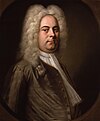
In 1703, the 18-year-old composer George Frideric Handel took up residence in Hamburg, Germany, where he remained until 1706. During this period he composed four operas, only the first of which, Almira, has survived more or less intact. Of the three lost Hamburg operas, the music for Nero is lost, while only short orchestral excerpts from Florindo and Daphne survive. Handel was born and grew up in Halle, where he received his early musical education and became an accomplished organist. In Hamburg he obtained employment as a violinist at the Oper am Gänsemarkt, the city's famous opera house. Here, he learned the rudiments of opera composition, mainly under the influences of Reinhard Keiser, the theatre's music director, and Johann Mattheson, its leading vocalist. The Gänsemarkt was largely dedicated to Keiser's compositions; his temporary absence in 1704 gave Handel his chance, and in quick succession he wrote Almira and Nero using librettos by Friedrich Christian Feustking. Almira was successful, Nero less so and was never performed after its initial run of three performances. Handel's final Hamburg operas, Florindo and Daphne, based on librettos by Heinrich Hinsch and originally conceived as a giant single entity, were not produced at the Gänsemarkt before Handel left Hamburg for Italy in 1706.
Portal:Opera/Selected article/42
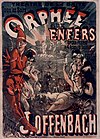
Orpheus in the Underworld is the English name for Orphée aux enfers, a comic opera composed by Jacques Offenbach to a libretto by Hector Crémieux and Ludovic Halévy. It was first performed as a two-act "opéra bouffon" at the Théâtre des Bouffes-Parisiens, Paris, on 21 October 1858, and was extensively revised and expanded in a four-act "opéra féerie" version, presented at the Théâtre de la Gaîté, Paris, on 7 February 1874. The opera is a lampoon of the ancient legend of Orpheus and Eurydice. In this version Orpheus is not the son of Apollo but a rustic violin teacher. He is glad to be rid of his wife, Eurydice, when she is abducted by the god of the underworld. Orpheus has to be bullied by Public Opinion into trying to rescue Eurydice. The reprehensible conduct of the gods of Olympus in the opera was widely seen as a veiled satire of the court and government of Napoleon III, Emperor of the French. Some critics expressed outrage at the librettists' disrespect for classic mythology and the composer's parody of Gluck's opera Orfeo ed Euridice; others praised the piece highly. In the late 19th century the Paris cabarets the Moulin Rouge and Folies Bergère adopted the music of the "Galop infernal" from the opera's culminating scene to accompany the can-can, and ever since the tune has been popularly associated with the dance.
Nominations
- Adding articles
- If you are unsure or do not know how to add an entry, feel free to post a question, suggestion or nomination here below, or at the talk page Portal talk:Opera.



